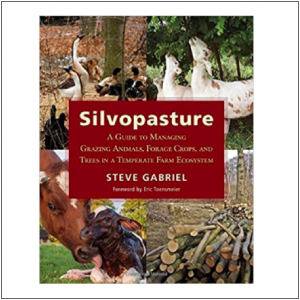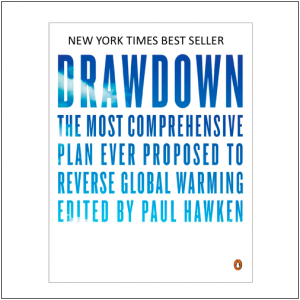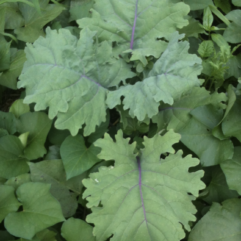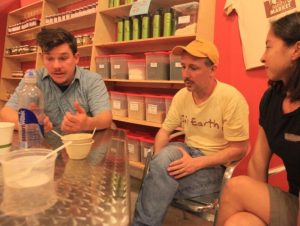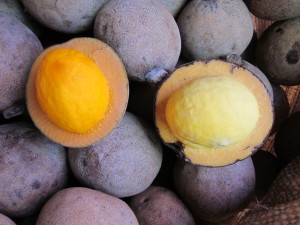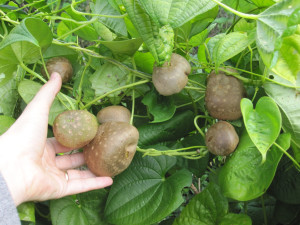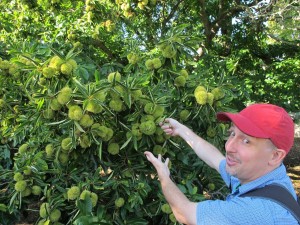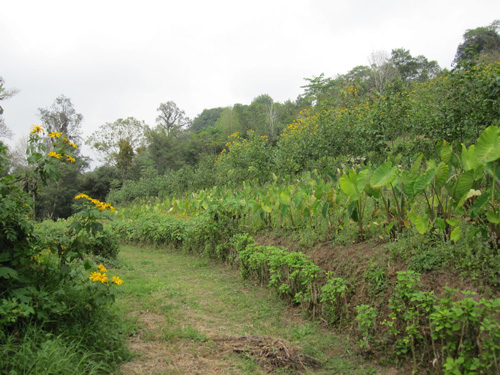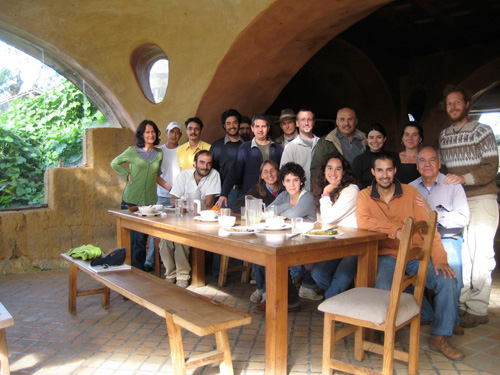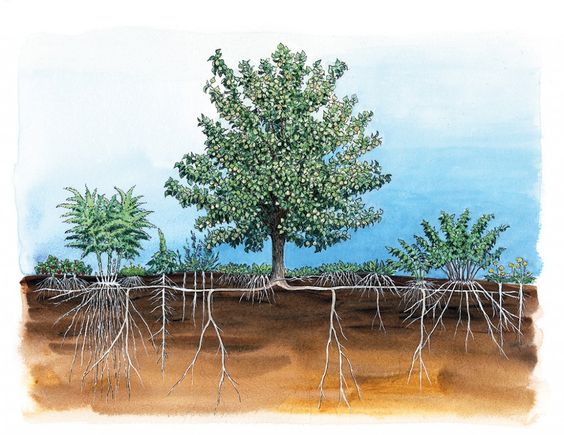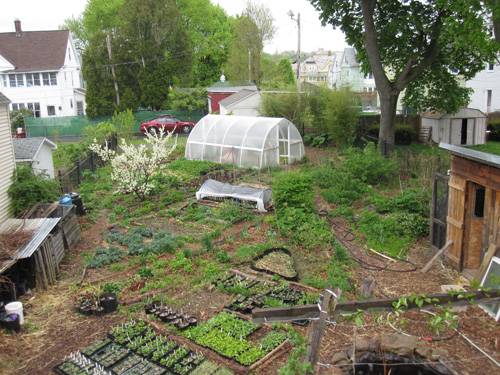Financial permaculture includes approaches to regenerative enterprise development (permaculture business planning), local investing, and economic development.
My podcast interview on financial permaculture.
Sign up for Financial Permaculture 2013. This will be an excellent course!
Read a financial permaculture article that I collaborated on with colleagues Gregory Landua and Mary Johnson from Terra Genesis International
Check out the latest from the Financial Permaculture Institute
Check out resources for beginning farmers at the New England Small Farm Institute’s Exploring the Small Farm Dream site.
Fantastic resources from ATTRA for agricultural and land-based businesses.
Financial Permaculture
Applying Permaculture Design to create financial, economic and enterprise models that regenerate the planet.
This article presents the design methodology and tools being used by the Financial Permaculture Institute to help grow successful permaculture businesses, cultivate re-distribution of surplus through investment, and create a firm foundation to begin systematic re-design of the global financial, monetary and economic systems.
Contents:
- Definition and Findings
- Design Principles
- Design Processes and Tools
- Investment Models
- Case Studies
- Conclusion
Definition and Findings
Definition:
“Financial Permaculture” is the design and management of business and monetary systems that increase ecological health while meeting human needs. Financial Permaculture thinking can be applied to many different economic and business models, suited to specific circumstances and designed accordingly.
Findings:
Financial Permaculture Institute: Exploring the possibilities of Finance and Permaculture
The Financial Permaculture Institute (FPI), a small team based in Lewis County, Tennessee, has been working to define, prototype and spread financial permaculture through collaboration, education and design. This article represents some of our initial findings and best thinking.
The FPI’s primary findings so far have been that the most viable steps in our bioregion are towards creating more, healthier, and more regenerative local businesses, and empowering people to become regenerative investors. The task at hand, as we see it in our region, is the creation of businesses that turn a profit in the existing (and for the most part broken) financial system, and re-invest that profit into more regenerative projects and businesses in the local community. This strategy puts power back into the hands of local people, and has demonstrated the capacity to build a movement slowly and surely while still keeping an eye on the bigger picture of opportunities for whole-systems regeneration. Instead of focusing on policy change we seek to engender change on the personal scale to empower individuals, friends, family and communities to invest in projects that matter to them, to buy and bank locally, or within a clear ethical and strategic framework, and to concentrate on building businesses that build local and multi-local resilience.
Design Principles:
Financial Permaculture Institute’s Design Principles
- Decentralization is better than centralization. The current financial system is linear and centralized, and is designed to continually further centralize power and wealth. We must find ways to decentralize power and wealth so that people within a given community can make well informed, well resourced, and locally appropriate decisions.
- Participatory design is true democracy. By empowering people with the process and tools needed to take decision-making into their own hands, we tap into the wisdom and fresh thinking of previously unheard voices.
- Land based businesses that use permaculture as a foundation of their design; production and distribution processes are the best investments and form the foundation of any viable long-term economy.
- Financial Intimacy creates closely knit and resilience communities. Invest in local enterprise. Invest in the dreams you share with friends, family and community. Become a stakeholder in your vision for a better world.
Design Processes and Tools:
The two primary tools used to design successful enterprises that generate surplus and then re-invest that surplus into regenerative projects and enterprises are Participatory Design and Holistic Management. By combining these processes we can create businesses that are well adapted to the needs and parameters of a local area, and are designed to succeed. When combined with a solid investment strategy and financial transparency this can generate revolutionary results.
1) Participatory Design of Businesses
Facilitating successful participatory design is an art form, necessary to creating thriving local economies. The Transition movement offers us a glimpse into its power.
In our experience the nine phases of successful participatory design are:
- Framing the discussion and design
- Building community cohesion
- Mapping the financial ecosystem (or other context)
- Brainstorming
- Narrowing the options
- Digging into the details
- Presenting the final projects to each other
- Articulating achievable next steps and generating responsibility for those next steps.
- Celebrating success.
This process requires expertise in both process and content.
Process is the liberating structure that allows for community creativity to be born and flourish. Process techniques include World Cafe, open space technology, consensus-building facilitation, appreciative inquiry, “think and listens”, fishbowl discussions, and many more. These methods, when appropriately applied, can allow people to freely voice their ideas and concerns while maintaining a dynamic structure that people can trust. The dynamic structure of the facilitation allows for a dance between giving full attention to each person’s contribution, and bringing the group’s full attention back to the central focus: designing a regenerative local financial system.
Content is the vast territory of design and strategy covered by permaculture design, as well as the vast territory covered by economics, business and finance. This requires a team of knowledgeable and flexible thinkers. Being able to switch gears from crunching numbers about the viability of a forest enterprise business to discussing the potential of an alternative currency system requires access to a wide range of information, and a willingness to dive into a creative process whose outcome may be unclear at first. Many times, however, communities already have all the expertise they need as long as the process is properly facilitated. Content is the area to include all the best thinking about waste re-use, regenerative land-use practices and new organizational design.
2) Holistic Management.
Holistic Management is a design and decision making system created by Allen Savory. It offers a wide range of excellent goal setting & decision-making tools for assessment and analysis of complex systems. It is a framework that can be very helpful in sustainable business & financial planning. We have found that Holistic Management, with its birth out of observation of the natural world, is a perfect companion to Permaculture Design and works brilliantly as a tool to help solidify design thinking and bring sound decision making into the regenerative financial permaculture design and participatory design process.
Holistic Goal Setting: This is created in a participatory process that focuses on shared vision and common ideals for a good quality of life. It becomes the guiding star for a group of decision makers.
Holistic Financial Planning: Using the Holistic Goal as the overarching purpose, Holistic Financial Planning is a systematized process that takes the group through a year of financial decisions. It helps a group define the profit it wants, and then learn how to cap expenses so that level of profit is achieved. All income and expenses for the year are outlined ahead of time. This allows the group the chance to understand which expenses will generate wealth, which are inescapable, and which are maintenance expenses. The chain of production is analyzed to determine the weakest link by enterprise, which helps prioritize where money and time should be spent so effort isn’t wasted, and profit pilfered away on unnecessary “wants” instead of actual “needs” that will take the business where it is intended to go, i.e. Profitability. Holistic Financial planning, because it is tied to a quality of life holistic goal, which includes the future resource base that is needed to sustain it, is inherently more sound than a business model that defines profitability solely on dollars and cents.
Investment Models: Funding a Permaculture Venture
Intimate Investing. Catherine Austin-Fitz, of Solari, Inc., has developed a process for creating small peer-to-peer investors’ groups that bring communities into what Catherine calls “financial intimacy”. Through mutual financial disclosure, cooperative learning and research, and vision oriented investing, members of a Solari Circle support each other to take responsibility for their finances and move towards the economic future that they design. This model does not require anyone involved to be a government-licensed investor, and is a quick way to move forward and invest financial capital into local businesses and permaculture projects. The downside of this model (and please note that the problem is the solution!), is that this model challenges us all to take responsibility for being able to communicate clearly with friends and family about finance. This requires a willingness to move through distress we may feel about money, and significant education about money and the financial system.
Micro-Credit: The Grameen Bank, Kiva.org, and others from around the world demonstrate simple models to use micro-finance to jump start promising small business ideas. Credit can be extended by individuals in a community, or from a resource pool. Micro-credit can easily be a part of a Solari Circle’s investment portfolio, through low interest funding of a diverse range of small, local business ventures.
Crowdsourcing: This is an exciting new innovation made possible by web 2.0 technologies. Crowdsourcing enable people to pitch good ideas to a diverse group of potential funders. Funders then choose an amount to invest or donate to a venture. Businesses like Kickstarter.com are leading the way to show how this approach can be profitable for all involved. Kickstarter proposals are only funded if their project budget is fully pledged. In this way, funders only pay for projects that have gathered sufficient support to move forward.
Ecosystem Investing: By investing in permaculture projects: trees, plants, biodiversity, water storage, natural buildings etc, we are banking away value in a very effective and important way. Turning Capital into robust and resilient ecosystems creates surplus of food, fuel and fodder and can be the source of many well function local businesses. Cost effective methods of ecosystem investing include, but are not limited to: nursery systems, aquaponics, keyline design and water storage on the landscape, rotational grazing to build soil, etc.
Pioneers of financial permaculture in North America have also, of course, created the Permaculture Credit Union, and are moving forward with great courage to create an alternative bank to provide loans, credit card and other financial tools for permaculture practitioners and other world changers.
Case Studies of Financial Permaculture in Action
Participatory Design in Hohenwald, Tennessee: Greening a Rural Southern Town
Located on the Cumberland Highland Rim of Middle Tennessee, Hohenwald is a small town nestled into rolling hills of oak-hickory forest. Local values of independence, hard work and family make Hohenwald a fertile location for regrowing a vibrant local economy. Hohenwald, like many towns across America, has a culture that has its heart centered around church. Church groups form the foundation of how people communicate, cooperate, and worship.
Hohenwald has been the host of the last two Financial Permaculture Courses, and through this process has gone through significant amounts of participatory design and process focused on the creation of a viable local economy. The Financial Permaculture Course series has been a natural outgrowth of community organizing work of Jennifer English. Financial Permaculture grew up along side the successful Transition Initiative to create a container for exploring ways to rejuvenate the local economy of Hohenwald. The Center For Holistic Ecology, a non-profit directed by Jennifer English, in collaboration with the Ecovillage Training Center, and the Sonnenschien Green Initative (Transition Town Hohenwald’s first committee) formed a steering committee that began asking the community what it needed. Churches, citizens, business people and government officials were all approached and from that conversation, the shape of the first Financial Permaculture Summit was born. It was to be a space for expert and interested folks from around the country to come and help give design energy to creating a “business ecology” for the town of Hohenwald.
The first year of the Financial Permaculture Course in Hohenwald yielded a suite of four business plans that were presented to key town stakeholders and visiting leaders from elsewhere in Tennessee.
Businesses that were designed included:
- Natural Building Cooperative
- Ethanol Plant
- Green Business Incubator
- Food and Farm Enterprises
The powerful participatory design that took place combined the insights and knowledge of people from around the country, including facilitators, content providers and participants, and synergized it with local design parameters, on the ground good thinking, and common sense from our local attendees. This mix of culture and ideas showed how people of all walks of life can communicate and cooperate together successfully given the right attention to process.
Click to see a great documentary made during the 1st FPC.
Of the four businesses planed during the event, three of the plans have had significant forward movement with Natural Building becoming integrated into the county low income housing system, a farmers market and community garden being started, and the formation of a green business consulting company focused on helping start ups (Access Consulting).
By last summer, the city council had made a proclamation supporting local “green” business and beginning the process of becoming a Transition Town to help move the community forward. This is an amazing example of how permaculture design and the process of participatory design can cut through class, politics, race and gender to help people take community health into their own hands.
Nuestras Raices – A Case Study for Permaculture Economic Development
Nuestras Raices (“Our Roots”) is a community organization in Holyoke Massachusetts that has used food, agriculture, and the environment as the basis for community development projects in the urban, largely low-income Puerto Rican neighborhoods where they work. Financial Permaculture presenter Eric Toensmeier has had the opportunity to be involved as a board member (for nine years), staff (five years), and consultant (more recently). Nuestras Raices has developed a series of functionally interconnected projects and businesses that serve the needs, and utilize the abilities of, Holyoke’s low-income residents.
During the development of the Nuestras Raices farm project, a community-driven permaculture design process was used to develop a design for a thirty-acre site just a few miles from downtown. The process integrated goals set by community members, a detailed site analysis, and market research. A large portion of the farm was set aside for parcels for start-up farmers, a group which has grown to include refugees and immigrants from around the world. A smaller portion of the farm was designated to serve as an intensively-used cultural agri-tourism destination. A set of business ideas were developed to be leased as concessions, with Nuestras Raices developing the infrastructure and seeking community entrepreneurs to develop and run the businesses. These concessions were designed to:
- minimize competition
- benefit the environment and the community
- celebrate Puerto Rican culture
- functionally interconnect by utilizing each other’s waste products; and
- mutually support each other by attracting customers to each other’s businesses.
The idea was that with good design, each business, through self-interested marketing of their operation, would attract customers to benefit other enterprises and the farmers as well.
Businesses currently on-site include 22 farm parcels, a pig-roasting operation, farm store, paso fino equestrian operation, petting zoo with heritage Caribbean breeds, and cultural events with up to 3,000 visitors for live music, theater, and folkloric dancing. Several greenhouse businesses are under development, with heat provided by waste vegetable oil from another Nuestras Raices restaurant downtown.
While this model is specific to the site and culture where it was developed, Nuestras Raices has developed a set of principles for local economic development that dovetail very nicely with permaculture. To learn more visit www.nuestras-raices.org.
Commercializing Edible Forest Gardens
Eric Toensmeier, co-author of Edible Forest Gardens and author of Perennial Vegetables, has also worked extensively in business planning for start-up farmers. He has been travelling the US and Latin America looking at commercially viable models of perennial farming systems.
Edible forest gardens have many benefits to the environment, and are a wonderful way to spend one’s time at the garden scale. There are many reasons to scale up these systems to a commercial scale – we need many thousands of perennial crop farms to sequester carbon and rebuild soils and ecosystems. But making the transition to commercial scale poses many difficulties, key among them the economic challenges of establishing a multifunctional community of support plants and the wait for perennial crops to come into bearing.
The challenge lies in finding crop (or crop-livestock) mixes that are:
- suited to conditions on a given site
- capable of functioning in polycultures
- relatively inexpensive to establish on a commercial scale; and
- marketable (particularly to high-end markets); and
- profitable.
Ideally such a product mix can be marketed to the same market or markets (such as a farm store or farmers’ markets) so the producer is not keeping track of wildly different markets. Such products would also ideally share infrastructure and equipment.
An example is Roberto Muj’s perennial market garden in Chimaltenango, Guatemala. The basic layout is alley cropping, with rows of trees including avocado, macadamia, mulberry, peach, alder, and citrus. The rows between feature perennial herbaceous crops including medicinal herbs, alfalfa for chicken fodder, cut flowers like Alstromeria, and perennial vegetables including runner beans and perennial kales. These crops are sold at local farmers’ markets, and the range of medicinals, flower bouquets, and fresh produce makes an appealing display.
The world needs a new generation of perennial crop farmers – will you take up the challenge? A brief Slideshare is posted at the Financial Permaculture blog. www.financialpermaculture.org and workshops will be offered at this years event.
Conclusion
Through the last two years members of the Financial Permaculture Institute’s teaching and development team have found that by simplifying the conversation to answer the following questions, we can focus our design into actionable ideas that bring us closer to the regenerative future we are hoping to create.
What are the most successful strategies for creating profitable right livelihood?
What are the most successful and accessible strategies for reinvesting profit back into the community?
The answer to these questions are unique for every individual, group and community. However, it is clear that there are certain common patterns and best practices that can help move our communities into the financial stability we need to truly start experimenting with alternative monetary and economic models. By creating individual and group financial permacultures using Participatory Design, Holistic Management Tools, Intimate and Decentralized Investing Strategies and Forest Garden Enterprise Models we create a firm foundation to explore more radical changes.
The next Financial Permaculture workshop is a call to participatory design to share best thinking about creating right livelihood and intimate investing systems as a foundation to build from as we work towards larger systemic transformation of the currency and markets that drive so much of human behavior. Join the conversation online at our blog, or check out the course site for more information about how to share you insights and participate with this exciting application of Permaculture Principles.
FPC 3: September 24th-26th
Gratitude and Acknowledgements:
Special Thanks to Catherine Austin Fitts, Jason Eaton, and the Solari crew for their hard work and expertise that has informed so much of this thinking.
Thanks to Ethan Roland, Connor Stedman, Patrick Gibbs and Andrew Langford for unwavering dedication to clarity and design process.
Thanks to Jennifer English and Albert Bates for being pillars of the community that has birthed this experience.
Thanks again to Jennifer for her leadership and good thinking.
Thanks to The Financial Permaculture Steering Committee, Sonnenschine Green Initiative and town of Hohenwald for good natured participation in this experiment on a grand scale.
Thanks to all of the teachers and students of the last two Financial Permaculture Design Courses.
Gregory Landua,
Gregory is a Gaia University Adviser in Training, Permaculture Designer, and Principal of Booya Cacao, a beyond fair trade, sail transport cacao company. He has focused the past two years directing the Ecovillage Training Center and working to build cooperative economic models that turn a profit. Gregory is a founding member of the Financial Permaculture Institute and Terra Genesis International.
Eric Toensmeier
Eric is co-author of Edible Forest Gardens and author of Perennial Vegetables, has also worked extensively in business planning for start-up farmers. He has been traveling the US and Latin America looking at commercially viable models of perennial farming systems. Eric is a founding partner of Terra Genesis International
Mary Johnson
Mary Johnson is a Permaculture Design & Holistic Management consultant and trainer working with Terra Genesis International. She works with farmers and business owners in the US & internationally using concepts from both Permaculture and Holistic management to help families, businesses, and organizations. You can read more about Holistic Management and International Permaculture on Mary’s blog.

